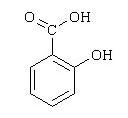
Abteilung
"Molekularbiologie und Physiologie"
des Albrecht-von-Haller-Institutes für Pflanzenwissenschaften
Mitglied des Göttinger Zentrums für
Molekulare Biowissenschaften
| Home | |
| Institut | |
| Abteilung | |
| Forschung | |
| Lehre |
|
| Forschergruppe | |
| Links | |
| Stellenangebote | |
| GZMB | |
| Wegweiser | |
| Stadt Göttingen | |
| English | |
| Förderung | |
|
Regulation of gene expression in response
to salicylic acid
|
Salicylic
acid (SA) is a plant
hormone that is synthesized upon attack of plants by biotrophic
pathogens.  As a
consequence of increased salicylic acid levels, a number of genes are
induced
that have either anti-microbial effects or that help to protect the
cells
against damage elicited by reactive oxygen species generated during the
interaction or by microbial toxins. Plants that cannot accumulate
salicylic
acid lack this response show an enhanced susceptibility phenotype.
Using Arabidopsis thaliana as a model system,
Xinnian
Dong and coworkers at As a
consequence of increased salicylic acid levels, a number of genes are
induced
that have either anti-microbial effects or that help to protect the
cells
against damage elicited by reactive oxygen species generated during the
interaction or by microbial toxins. Plants that cannot accumulate
salicylic
acid lack this response show an enhanced susceptibility phenotype.
Using Arabidopsis thaliana as a model system,
Xinnian
Dong and coworkers at During our search for TGA-interacting proteins that might play a role in NPR1-independent processes, we have identified a glutaredoxin, which is transcriptionally induced by salicylic acid (Ndamukong et al., 2007). Transgenic plants that constitutively express this glutaredoxin cannot induce the jasmonic acid-inducible PDF1.2 gene. Jasmonic acid is a crucial plant signalling molecule that orchestrates plant defense preocesses in response to necrotrophic pathogens and herbivore attack. It is well known that SA can suppress JA-elicited responses. Therefore, we hypothesize that transcriptional activation of the TGA interacting glutaredoxin by SA plays an important role in this negative cross-talk. Moreover, a certain subfamily of TGA factors needs to be reduced to become competent to interact with NPR1. At the moment, we are elucidating the function of the glutaredoxins in the various TGA-dependent processes (PhD Position available). PhD students: Sebastian
Pape (since 2005), Katja Rindermann
(since 2005), Mark Zander (since 2007), Julia Köster (since 2007) Publications:
Krawczyk et al., 2002;
Weigel et al., 2005;
Ndamukong et al., 2007 |
|
|
| Home| Institut| Abteilung| Forschung| Lehre| Interna| Stellen| GZMB| Wegweiser |
Bei technischen Fragen und Problemen bitte e-mail an den Webmaster